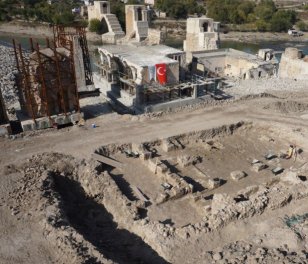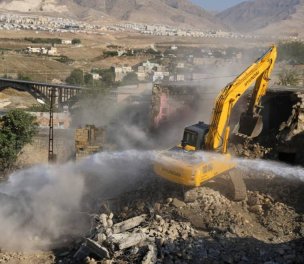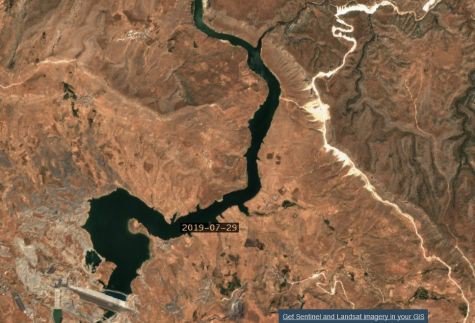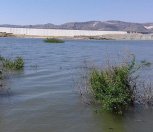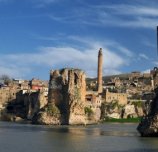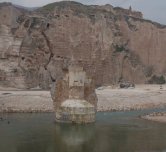Report on Hasankeyf: 'Women will Pay the Heaviest Price in Migration Wave'
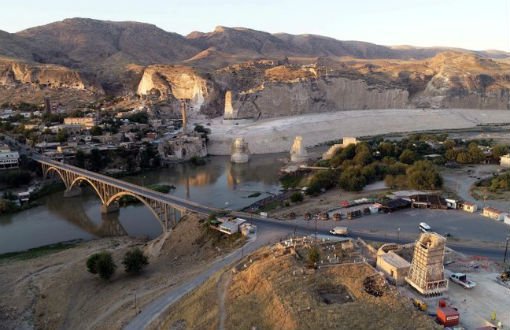
Click to read the article in Turkish
The Coordination of Hasankeyf has published a report entitled "Ilısu Dam and hydroelectric power plant project Review Report" on the dam being built in the area including the ancient city of Hasankeyf in Batman province in southeastern Turkey.
The report said that the survey work of the dam project began in 1954 and included the process and reflections that have come to date.
"One of the most important problems of Ilısu Dam, like many other dams, is that its economic life is no more than 50-60 years, " said the report, noting the effects of the Ilısu project on ecological, social and cultural assets. For 50 years of energy, 12 thousand years of history, will the Tigris River, which formed over millions of years, be destroyed?" he asked me. The report briefly said the following:
* The Ilısu project is such a huge project in terms of geography that if it were to be implemented, it would leave a total of 199 villages in Batman, Siirt, Diyarbakır, Mardin and Şırnak provinces and Hasankeyf district completely or partially under the water. According to the State Water Management (DSI) figures, 85 out of 199 villages will be completely submerged. As many as 55 thousand people in 200 settlements will lose their homes and/or lands, of which 15 thousand will have to emigrate.
* The population in the villages is composed entirely of Kurds whose identity is not recognized in the Constitution. Of these, two villages in Batman's Beşiri district have Yazidi faith. Hasankeyf district consists of Kurds and Arabs half-and-half. If we include the migrants from the Ilısu project, we can easily state that the number of people affected exceeds 100 thousand.
Economic impact
* If there is migration to the cities, many social, economic and psychological problems will await the migrants. Those who are producers in rural areas will now be consumers in urban areas. Those who come to the cities will not be able to find work because of their professional position, as they are usually farmers, and if they do, they will work hard jobs with the lowest incomes.
* Women will pay the biggest bill for coming to the city. This situation will disappear in the city as women take part in the production in the countryside. There's a good chance that women who don't know the city will be locked up between four walls.
* The upper Tigris Valley where Ilısu Dam is planned is very important for the history of civilization. This region, known as Upper Mesopotamia, is an important part of the geography in which the first settlements in human history were formed, according to recent excavations and surveys. In other words, it is a critical area of the "Fertile Crescent," where the Neolithic Revolution developed.
* So far, only 20 sites have been excavated in the Ilısu region, meaning that the overwhelming majority of archaeological sites will remain under the lake without being explored and will be destroyed. If the Ilısu dam is filled, the archaeological data finds and sites that we cannot predict and/or do not know about will be destroyed and lost before they are brought to light.
Ecological impact
* If the Ilısu project becomes operational, the damage it will do to nature will be very serious in a large region. Ilısu project will create a 313 square kilometer Dam Lake and 136 km of the Tigris river itself, including 400 km of streams will be turned into an artificial lake.
* According to the studies done by the University of Tigris, the number of fish species in the Tigris River in Diyarbakir and Batman provinces is expected to drop to an estimated three-five, while the number of fish species in the Tigris River is 40.
* Again, a very important problem and danger is the expected decline in the water quality of the planned dam Lake. This condition, called eutrophication, is the extinction of living things in the dam lake by the reduction of oxygen in the wastewater due to biological and chemical substances.
* In the high mountains in the last 25 years, the decrease of the already decreasing snowfall, as well as the extremes of rainfall regime will increase. A year can be very dry, a period of the following year can be very rainy. The rainfall regime will directly affect agriculture, resulting in reduced food security.
* One of the most important problems of Ilısu Dam, like many other dams, is that its economic life is no more than 50-60 years. For 50 years of energy, 12 thousand years of history, will the Tigris River, which formed over millions of years, be destroyed?
International impact
* The Tigris River crosses the borders of Turkey and flows into the territory of the states we call Syria and Iraq today due to its natural structure. With the construction of the Cizre Dam, there is a possibility that by the end of the arid summers the water that will flow from the Tigris River into Iraq will be completely depleted.
* Under these circumstances, the control of the water that will be made possible on the Tigris River by the construction of the Ilısu Dam may adversely affect relations between the countries and hinder the development of regional peace. (RT/VK)





